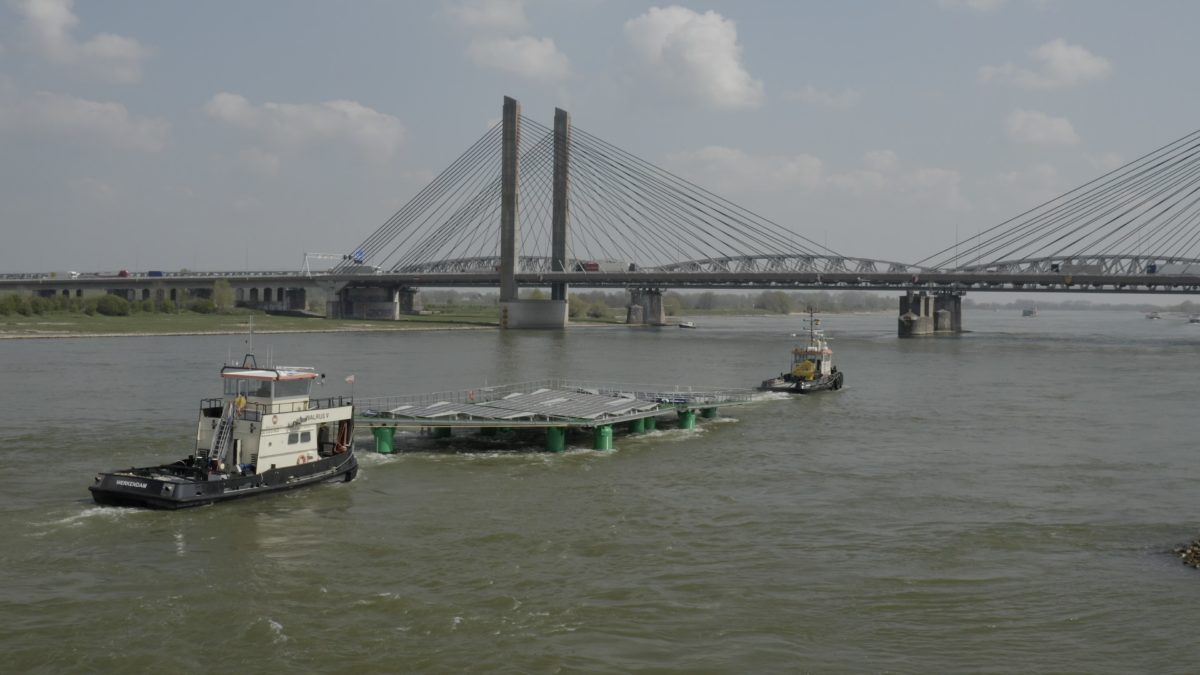German utility RWE and Dutch offshore PV specialist SolarDuck have announced plans to jointly build a pilot offshore PV project close to an offshore wind farm in the North Sea off the coast of Ostend, Belgium.
The Merganser project will have a capacity of 500 kW. It is expected to go online next year, the two companies said in a statement.
“Merganser will provide RWE and SolarDuck with important first–hand experience in one of the most challenging offshore environments in the world,” they said. “These learnings will enable a faster commercialization of the technology from 2023 onwards.”
The two companies also revealed that RWE is currently participating in the Dutch offshore wind tender for the Hollandse Kust West (HKW) sites VI and VII. SolarDuck was chosen as a tech partner, with the aim of building an offshore floating solar plant at pre–commercial scale with a capacity 5 MW at the future wind power complex.
“We are very keen to further explore the potential of offshore floating solar together with our partner SolarDuck,” said Sven Utermöhlen, CEO of wind offshore for RWE Renewables. “For countries with lower mean wind speeds but high solar irradiation, this opens up attractive opportunities. With the SolarDuck pilot we are gaining experience with a highly innovative offshore floating solar technology.”
Popular content
In 2021, SolarDuck unveiled the first demonstrator project to feature its floating structure technology for solar projects at offshore sites in estuaries, natural harbors, and near-shore sites. The 64 kW system was deployed on an inshore site in the Waal (Rhine), the widest river of the Netherlands, near IJzendoorn, a village in the province of Gelderland.
The structure holds the solar panels more than 3 meters above the water, and is able to handle coastal sea conditions and hurricane-force winds. It is optimized for offshore sites in estuaries and natural harbors, as well as near-shore sites. The basic floating platforms are triangular structures measuring 16 meters x 16 meters x 16 meters. They resemble offshore floating wind platforms or floating oil platforms. They can be flexibly connected together to form large plants.
“The idea is based on our offshore heritage,” Burgers told pv magazine in a recent interview. “Our company is a spin-off from the research department of the Damen Shipyards Group in the Netherlands, a company which uses the best of industry practice to design a reliable solution which is able to cope with the harsh maritime environment.”
This content is protected by copyright and may not be reused. If you want to cooperate with us and would like to reuse some of our content, please contact: editors@pv-magazine.com.



4 comments
By submitting this form you agree to pv magazine using your data for the purposes of publishing your comment.
Your personal data will only be disclosed or otherwise transmitted to third parties for the purposes of spam filtering or if this is necessary for technical maintenance of the website. Any other transfer to third parties will not take place unless this is justified on the basis of applicable data protection regulations or if pv magazine is legally obliged to do so.
You may revoke this consent at any time with effect for the future, in which case your personal data will be deleted immediately. Otherwise, your data will be deleted if pv magazine has processed your request or the purpose of data storage is fulfilled.
Further information on data privacy can be found in our Data Protection Policy.